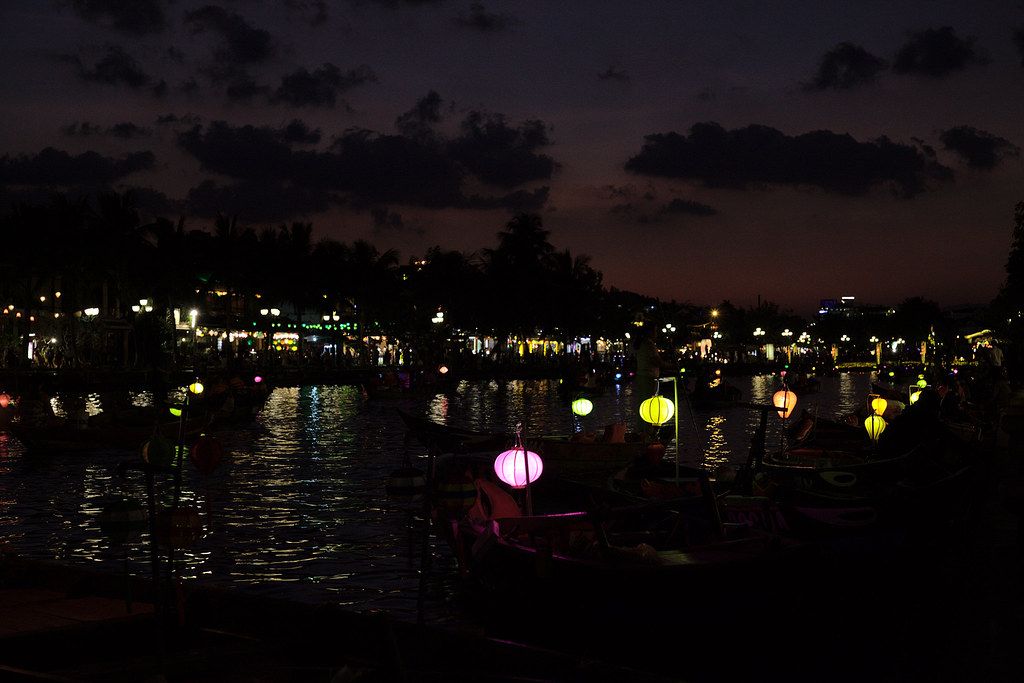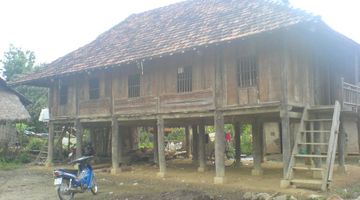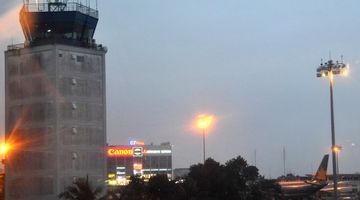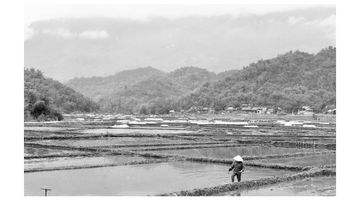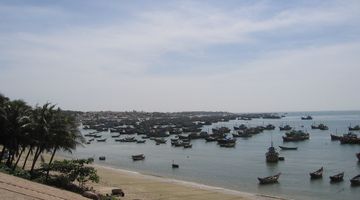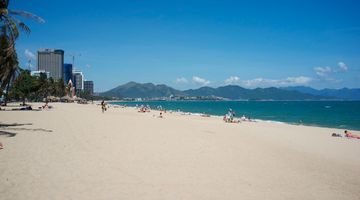Hoi An
In a nutshell
When we visited Hoi An we were charmed by its unique culture and architecture – and we weren’t the only ones. Many travellers who pass through Hoi An are enchanted by its mix of French Colonial influence and traditional Vietnamese customs.
Located on the central coast, this UNESCO World Heritage city can be recognised for its lantern-lit streets, delicious coffee, and tailoring shops, but its culture is far more deep-rooted than that. Hoi An’s history and heritage dates back to the Cham people who lived more than 2000 years ago and you can visit their ancient ruined city, My Son, just an hour away, nicknamed the Angkor Wat of Vietnam.
Why go?
Hoi An is a historic city with lots of appeal. The quiet streets of the Old Town are lined with lanterns which make for an unapologetically good photo, while its lazy river flows through the middle of the city, lit at dusk with river lanterns sent downstream by well-wishers. Hoi An, with its winding lanes, temples, Chinese-style shopfronts, quirky boutiques and coffee houses, is a unique destination in Vietnam and you can happily spend most of your time just wandering around.
Due to its coastal location, Hoi An also boasts a white sandy beach, Cua Dai, and an island paradise called Cham Island which is doable in a day trip.
When to go
Hoi An’s dry season runs between February and July when you can expect lots of sunshine and little rain, as well as low humidity.
April and May are the most popular months to visit, as they enjoy the most manageable temperatures, whereas June and July can get very hot.
If you plan on visiting Hoi An during the dry season, try and coincide your dates with one of the monthly Lantern Festivals over the full moon. The streets are closed to traffic, the electricity is shut off and the town is illuminated solely by lanterns and candles, making it one of the most magical times to visit.
Accommodation
Hoi An is becoming an increasingly popular destination in Vietnam and there are plenty of lodging options in the brightly coloured, French Colonial buildings that line the streets of Hoi An’s Old Town.
Whether your budget allows for a shared dorm in a hostel or a five-star boutique hotel, Hoi An offers it all and you can look to spend anything from USD6 a night to USD300 in one of these quirky, historic houses.
If you venture slightly out of town, you will find friendly homestays run by local families, or Hoi An’s beach front offers a mix of luxury resorts and affordable hotels if you want a coastal view. Most accommodation also offers bicycle or scooter rentals, too.
Food
The food in Hoi An is noteworthy thanks to its rich culture and heritage, drawing from Chinese, Vietnamese, Japanese and French Colonial influences, so there is a wonderful mix of cuisine to sample. You won’t be eating the same dish twice!
If you’re a fan of the local fare, the area near the market in the Old Town offers some delicious meals on the cheap, but if you have a more Western palette then there are some great finds tucked away behind the Japanese bridge for a slightly higher price range.
During the day, the café culture thrives with tea houses and coffee shops aplenty where you can also indulge your sweet tooth on a huge variety of cakes and pastries. One of our favourite pick-me-ups is a traditional Vietnamese cà phê nâu đá (iced milky coffee).
Getting around
Unlike the rest of Vietnam, where you need to battle your way through the cacophony of scooters and cars, Hoi An is blissfully calm and quiet and that’s because there is little to no traffic – most people prefer to cycle or walk as the city centre is so small.
But if cycling, or walking, isn’t your thing, scooters are just as easy to come by and are cheap to rent. It might be a good idea to get one for the day if you want to head to the beach, or My Son to see the Cham ruins. Make sure you wear a helmet, too, as you could be fined.
Getting in and out
One of the ways we recommend getting to Hoi An is along the iconic Hai Van Pass, the route across the mountains from Hue to Hoi An. The route was made famous on the BBC’s Top Gear and most travellers who come to Hoi An from the north of Vietnam arrive this way, by scooter or motorbike. It’s common to do the 130km drive with an organised, guided group who provide you with the scooters, or easyriders, and who take you through local villages for a bit of culture along the way.
The nearest airport to Hoi An is Da Nang, just under an hour drive from the centre, and flights from Air Asia, Cathay Pacific and Vietnam Airlines are among the many that fly in from all over Asia, as well as Hanoi and Ho Chi Minh.
Safety
Hoi An is a quiet and peaceful city, however, like any city where there has been an influx in tourism, you should be respectful of local customs, including dress and behaviour.
Some prudent advice: motorbike taxis should be avoided after dark (no matter how persistent they are!) especially if you are a woman and on your own, and as always, keep an eye on your personal belongings – you don’t want to make yourself a target so leave all valuables locked away safely in your room or at reception.
Overall, however, Hoi An is a harmless and friendly city and reported issues are few and far between, but, as they say, it’s better to be safe than sorry!

